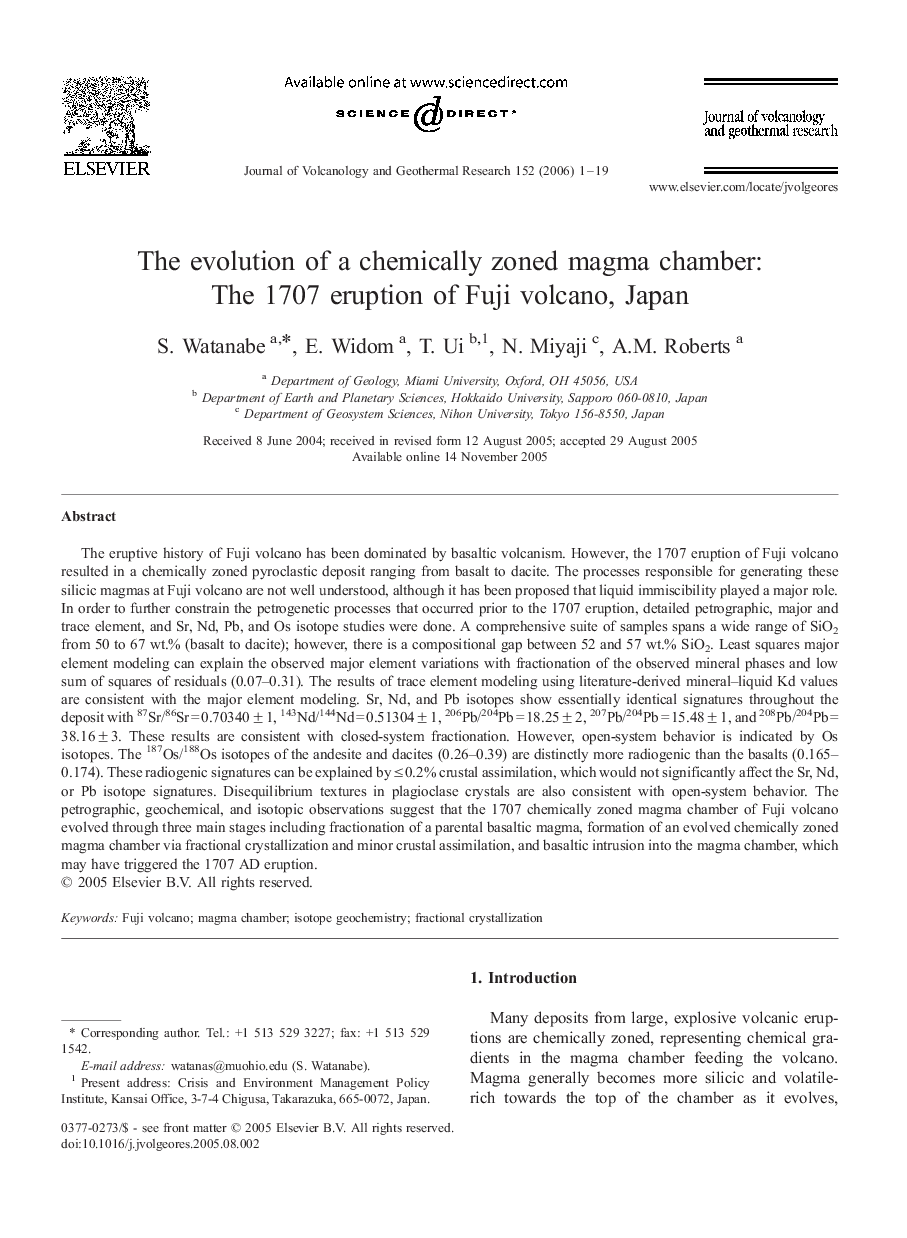| کد مقاله | کد نشریه | سال انتشار | مقاله انگلیسی | نسخه تمام متن |
|---|---|---|---|---|
| 4715137 | 1638482 | 2006 | 19 صفحه PDF | دانلود رایگان |

The eruptive history of Fuji volcano has been dominated by basaltic volcanism. However, the 1707 eruption of Fuji volcano resulted in a chemically zoned pyroclastic deposit ranging from basalt to dacite. The processes responsible for generating these silicic magmas at Fuji volcano are not well understood, although it has been proposed that liquid immiscibility played a major role. In order to further constrain the petrogenetic processes that occurred prior to the 1707 eruption, detailed petrographic, major and trace element, and Sr, Nd, Pb, and Os isotope studies were done. A comprehensive suite of samples spans a wide range of SiO2 from 50 to 67 wt.% (basalt to dacite); however, there is a compositional gap between 52 and 57 wt.% SiO2. Least squares major element modeling can explain the observed major element variations with fractionation of the observed mineral phases and low sum of squares of residuals (0.07–0.31). The results of trace element modeling using literature-derived mineral–liquid Kd values are consistent with the major element modeling. Sr, Nd, and Pb isotopes show essentially identical signatures throughout the deposit with 87Sr/86Sr = 0.70340 ± 1, 143Nd/144Nd = 0.51304 ± 1, 206Pb/204Pb = 18.25 ± 2, 207Pb/204Pb = 15.48 ± 1, and 208Pb/204Pb = 38.16 ± 3. These results are consistent with closed-system fractionation. However, open-system behavior is indicated by Os isotopes. The 187Os/188Os isotopes of the andesite and dacites (0.26–0.39) are distinctly more radiogenic than the basalts (0.165–0.174). These radiogenic signatures can be explained by ≤ 0.2% crustal assimilation, which would not significantly affect the Sr, Nd, or Pb isotope signatures. Disequilibrium textures in plagioclase crystals are also consistent with open-system behavior. The petrographic, geochemical, and isotopic observations suggest that the 1707 chemically zoned magma chamber of Fuji volcano evolved through three main stages including fractionation of a parental basaltic magma, formation of an evolved chemically zoned magma chamber via fractional crystallization and minor crustal assimilation, and basaltic intrusion into the magma chamber, which may have triggered the 1707 AD eruption.
Journal: Journal of Volcanology and Geothermal Research - Volume 152, Issues 1–2, 1 April 2006, Pages 1–19